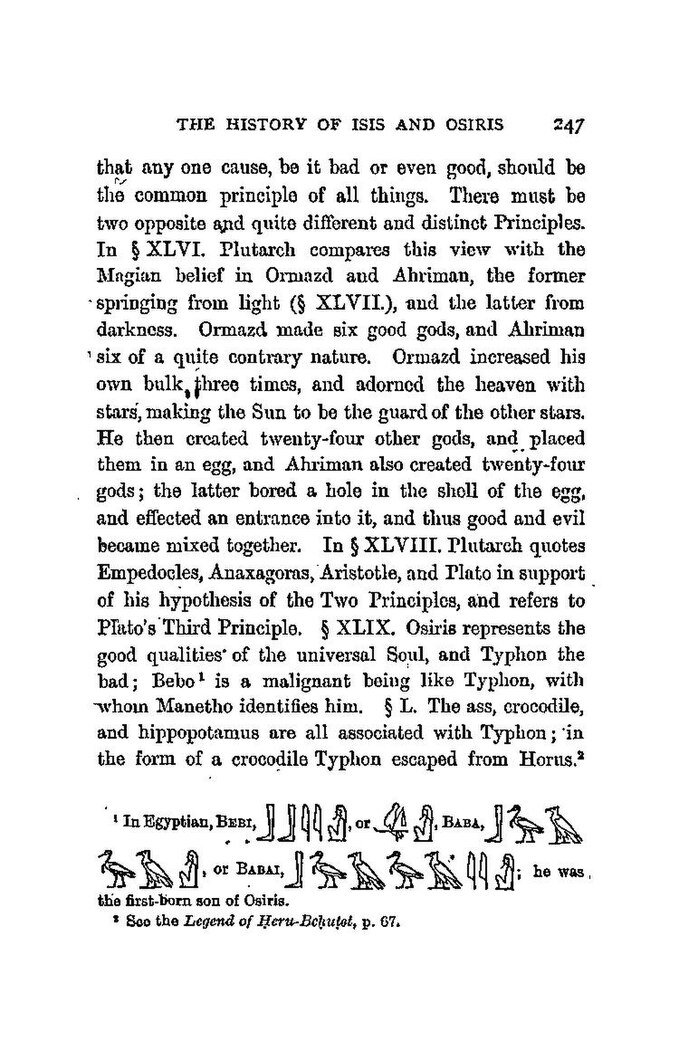that any one cause, be it bad or even good, should be the common principle of all things. There must be two opposite and quite different and distinct Principles. In § XLVI. Plutarch compares this view with the Magian belief in Ormazd and Ahriman, the former springing from light (§ XLVII.), and the latter from darkness. Ormazd made six good gods, and Ahriman six of a quite contrary nature. Ormazd increased his own bulk three times, and adorned the heaven with stars, making the Sun to be the guard of the other stars. He then created twenty-four other gods, and placed them in an egg, and Alwiman also created twenty-four gods; the latter bored a hole in the shell of the egg, and effected an entrance into it, and thus good and evil became mixed together. In § XLVIII. Plutarch quotes Empedocles, Anaxagoras, Aristotle, and Plato in support of his hypothesis of the Two Principles, and refers to Plato’s Third Principle. § XLIX. Osiris represents the good qualities of the universal Soul, and Typhon the bad; Bebo[1] is a malignant being like Typhon, with whom Manetho identifies him. § L. The ass, crocodile, and hippopotamus are all associated with Typhon; in the form of a crocodile Typhon escaped from Horus.[2]
